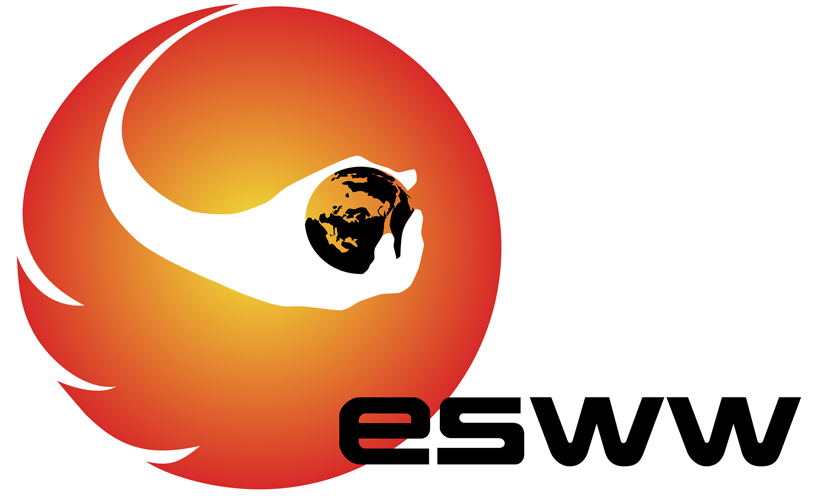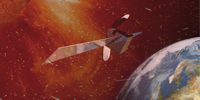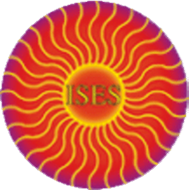
15-19 November, 2010 - Brugge, Belgium
Spacecraft Environments and Effects
| Session: | Session 2 Spacecraft Environments and Effects (02) |
| Type: | Oral presentation |
| Date: | Tuesday, November 16, 2010 |
| Time: | 09:00 - 12:30 |
| Chair: | Eamonn Daly & Viviane Pierrard |
| Co-chair: | |
| Remarks: | Coffee break: 10:35 - 11:00hrs |
| Seq | Time | Title | Abs No | ||||
| 1 | 09:00 |
Recent Developments in Dynamic Modelling of the Earth's Radiation Belts
Horne, Richard; Glauert , Sarah; Meredith, Nigel British Antarctic Survey, UNITED KINGDOM The Earth's radiation belts are a well known hazard for satellites on orbit. The relativistic electron flux trapped inside the Earth's magnetic field can vary by up to five orders of magnitude in response to the solar wind and pose a significant risk to satellites. One example of this was during the so called Halloween storm in 2003 where 30 satellites reported anomalies and one was a total loss. The largest magnetic storm on record is the 1859 Carrington storm. A storm as large as this has never occurred in the satellite era, but if it did it has been argued that the potential satellite losses are far higher than in 2003. In recognition of these risks, and the increase in the solar cycle, there are new initiatives in Europe to develop dynamic models of the electron radiation belts to help protect satellites on orbit. Here we describe recent progress on developing global radiation belt models that take into account radial transport, acceleration and loss and discuss their potential benefits. We describe the three basic physical processes, and the significant challenges they present in terms of the computational complexity, and the need to obtain data on electromagnetic waves from ultra low frequencies (mHz) to very low frequency (kHz) to drive the physics in the models. We show the results of modelling particular magnetic storms which highlight the need to include electron acceleration and loss by wave-particle interactions. We discuss losses at low L shells due to lightning whistlers, transmitters, and whistler mode hiss, and compare new electron loss rate calculations against observations which agree well at low energies but diverge at high energies. We discuss some of the factors that could account for the difference in results. Finally we highlight the need to collect and combine more data on the waves from ground and space, the need for particle data and magnetic indices such as Kp and AE in near real time, and the need for continued data from the inter-planetary medium to drive forecasting models. |
|||||
| 2 | 09:25 |
The Transient Observation-based Particle (TOP) Model and its Potential Application in Radiation Effects Evaluation
Benck, Sylvie; Cyamukungu, Mathias; Cabrera, Juan; Pierrard, Viviane Center for Space Radiations at UCL, BELGIUM The evaluation of the radiation hazard on components used in space environment is based on the knowledge of the radiation level encountered on orbit. Presently static models are widely used to assess the near-Earth environment for a given mission. These static and empirical trapped radiation models are derived from an extensive compilation of spacecraft measurements and hence are not suited for describing the short time scale variations of geomagnetic conditions. The TOP-model tends to break with this classical approach by introducing dynamic features based on the observation and characterization of transient particle flux events in addition to classical mapping of steady-state flux levels. In order to get a preliminary version of an operational model (actually only available for electrons at LEO), i) the steady-state flux level, ii) the flux enhancements probability distribution functions and iii) the flux decay-time constants (at given energy and positions in space) were determined, and an original dynamic model skeleton with these input parameters has been developed. The methodology will be briefly illustrated and first flux predictions from the model will be presented. In order to evaluate the net effects of radiation on a component, it is important to have an efficient tool that calculates the transfer of the outer radiation environment through the spacecraft material, towards the location of the component under investigation. For this purpose, the GEANT4 simulation tool is extensively used. Using the TOP-model space radiation fluxes and the local radiation environment characteristics derived through GEANT4 calculations, potential cases will be assessed where the dynamic of the spacecraft radiation environment may have an impact on the observed radiation effects. |
|||||
| 3 | 09:40 |
Space Weather in Medium Earth Orbit During Solar Cycle 24 Decline and Start-up of Cycle 25
Evans, H.D.R.1; Nieminen, P.1; Daly, E.1; Buehler, P.2; Buehler, P.2; Hajdas, W.3; Mohammadzadeh, A.1; Ryden, K.4 1ESA, NETHERLANDS; 2P. Buehler, AUSTRIA; 3Paul Scherrer Institut, SWITZERLAND; 4QinetiQ, UNITED KINGDOM The Galileo precursor spacecraft, Giove-A and ?B have been in service since 2005 and 2008 respectively and are still active today. Both spacecraft carry radiation sensors which have been providing good quality radiation data, aimed primarily at improving the knowledge of the environment in this orbit. So far the observations have covered the declining phase of the solar cycle and solar minimum and they are current observing the rising phase. Giove data already received are currently being used to update and validate a MEO radiation model that is specifically designed for calculation of dose-related effects in the Galileo orbit. Data and comparisons from these two spacecraft and the SREM data from INTEGRAL and PROBA-1 will be presented. |
|||||
| 4 | 10:00 |
Space Environment Measurements by JAXA Satellites and ISS - Results and Future Plan
Obara, Takahiro; Matsumoto, Haruhisa; Koga, Kiyokazu JAXA, JAPAN In order to monitor space environment and its temporal variations, JAXA (Japan Aerospace Exploration Agency) Space Environment Group has been conducting space environment measurements for more than 20 years. JAXA installed space radiation detectors, magnetometers and plasma detectors on LEO (Low Earth Orbit) satellites, GEO (Geostationary Orbit) satellites, GTO (Geostationary Transfer Orbit) satellites and JEM (Japanese Experimental Module) of the ISS (International Space Station). With these data, some distinguish achievements on space environment science have been obtained and an assessment of space environment models are under taken. Solar proton advanced model has recently been proposed to ISO (International Standard Organization) and an advanced radiation belt model, which accommodates temporal and spatial variations of relativistic electrons in the outer radiation belts, will be proposed to ISO shortly. Intensity of MeV electrons seems to be controlled by solar wind velocity as well as magnetic activities. We confirmed that solar wind velocity controls MeV electron intensity in the vicinity of GEO altitude on the centrally magnetic activities decide MeV electron intensity. With these relations, we have started to construct an advanced outer radiation belt model with foreign partners. Transport of MeV electrons into the inner radiation belt was also identified. MeV electrons penetrate into the inner belt across the slot region during the recovery phase of the very big magnetic storms only. These penetrations will be one of the supply processes of MeV electrons in the inner radiation belt. JAXA is also using these real-time space environment data brought by JAXA satellites and International Space Station /Japan Experimental Module (ISS/JEM) to inform warnings to operators of JAXA satellites as well as ISS/JEM, when the space environment will become dangerous. In the talk, we will highlight some achievements by measurements and the initial results obtained by recent Quasi Zenith Satellite. |
|||||
| 5 | 10:15 |
Monitoring of Space Ionizing Radiation in Russian Federal Space Agency
Ishutin, I.O.1; Anashin, V.S.2; Emelyanov, V.V.2; Milovanov, Y.A.2 1Space Device Engineering Institute, RUSSIAN FEDERATION; 2Space Device Engineering Institute, Russian Federal Space Agency, RUSSIAN FEDERATION The experience of the Russian MISFET radiation dose sensors, placed onboard MEO orbit satellites are presented. The radiation dose and SEE sensitive elements, concept of action and technical features are considered. The results of dose monitoring are analyzed and compared to existing space environment models. It is shown that the developed dose sensors are able to monitor space ionizing radiation disturbances. The dose rate increases in September 2008 and April 2010 are discussed. |
|||||
| 6 | 11:00 |
The Commercial Spacecraft Operator's View of Space Weather
Pitchford, Dave SES ENGINEERING, LUXEMBOURG The business of a Commercial Spacecraft Operator can in the worst case be adversely affected by adverse Space Weather. Here we introduce the business of a Commercial Communications Satellite Operator; a typical modern satellite and the way that we operate it will be described as background information. Then the concept of a Spacecraft Anomaly is introduced, and some signatures that may be observed in spacecraft telemetry are described. Examples of Spacecraft Anomalies that are likely to have been caused by Space Weather will be presented. As an excursion into history some spacecraft failures that are likely to have been Space Weather related will be discussed briefly. The Easter 2010 period will be used as an example of a period when Space Weather related Spacecraft Anomalies were experienced. Then there will be a switch to looking to the future, and some comments on what the Solar Cycle 24 Maximum period may have in store for us. Finally some comments will be made regarding the value of small Space Environment Sensors onboard commercial satellites. |
|||||
| 7 | 11:25 |
Space Weather Conditions at the Time of the Galaxy 15 Spacecraft Anomaly- Report by the NOAA Tiger Team
Onsager, Terry1; Denig, W. F.2; Rodriguez, J. V.3; Singer, H. J.4; Lotoniu, T. M.3; Biesecker, D.4; Wilkinson, D. C.2; Green, J.1 1NOAA, UNITED STATES; 2NOAA/ National Geophysical Data Center, UNITED STATES; 3University of Colorado, CIRES, UNITED STATES; 4NOAA/Space Weather Prediction Center, UNITED STATES On April 05 2010, Intelsat reported that the Galaxy 15 geosynchronous satellite stopped responding to ground commands. The satellite manufacturer, Orbital Sciences subsequently noted that the anomaly was likely related to "unusually violent solar activity that week that damaged the spacecraft's ability to communicate with ground controllers". Here we describe the sequence of space weather events from the sun to the Earth and the radiation environment near the location of Galaxy 15 at the time of the anomaly. We present observations including solar images, solar wind measurements, geosynchronous particle and field measurements and ground magnetometer data. The observations show that the anomaly occurred after an unremarkable coronal mass ejection from the sun grazed Earth resulting in an unusually large substorm. The substorm caused in an extensive reconfiguration of Earth?s magnetotail followed by an injection of energetic particles over a wide local time region encompassing the location of Galaxy 15. This report describes the severity of the space environment surrounding the anomaly and is intended to aide ongoing anomaly analysis but it does not include any assessment of the space weather conditions on specific satellite components. |
|||||
| 8 | 11:45 |
On-Orbit Anomalies: Investigations and Root Cause Determination
Ecoffet, Robert CNES, FRANCE Spacecraft anomalies due to radiation effects on electronic devices have been known since the very beginning of the space era. They represent today a major part of on-board anomalies, mission outages and unexpected workload on ground controllers of operational systems. This talk will first describe a sample of known cases of cumulated or transient effects in Earth or planetary environments. Then, it will discuss investigation methodology, and issues such as the statistical aspects of probabilistic anomalies in the assessment of cause to effects relationships, and the necessity of multi-field experts group root cause analysis, from radiation effects to satellite fault determination, identification and reconfiguration strategy (FDIR). A focus on some practical case of anomaly analysis will be made. Finally, brief considerations on the help of on-board environment and radiation effects monitoring will be done. |
|||||
| 9 | 12:10 |
Impact of the Particle Environment on SWAP and LYRA Data
Dominique, Marie1; Berghmans, David1; Dolla, Laurent1; Kruglanski, Michel2; De Donder, Erwin 2;Schmutz, Werner2 1Royal Observatory of Belgium, BELGIUM; 2Belgian Institute of Space Aeronomy, BELGIUM; ;3Physikalisch-Meteorologisches Observatorium Davos (PMOD/WRC), SWITZERLAND PROBA2 is an ESA micro-satellite in a polar, low Earth orbit at an altitude of about 725km. The coronal imager SWAP and the UV radiometer LYRA, observe the Sun from the ESA's PROBA2 platform for more than six months. The SWAP and LYRA observations have been episodically perturbated by the particles environment through which the spacecraft propagates. For example, both instruments clearly show the effect of the South Atlantic Anomaly. In conjunction with enhanced geomagnetic activity, LYRA also records signatures of propagation through the auroral regions. An analysis of these perturbations in both SWAP and LYRA data is proposed. In particular we focus on the behavior of the new detector technology used in LYRA (rad-hard wide-bandgap detectors, based on diamond) in such particle enviroments. |
|||||







